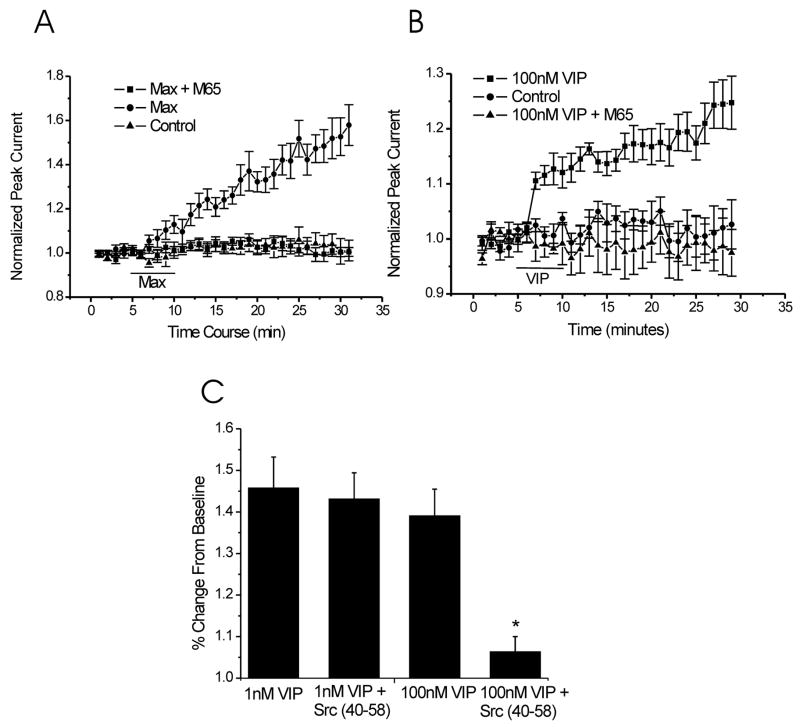Figure 5. PAC1-R is involved in the potentiation of NMDA-evoked currents induced by VIP (100nM). In addition, Src is required for VIP (100nM) effect but not for VIP (1nM) effect on NMDA-evoked currents.
A. Application of 1nM maxadilan in the extracellular solutions enhanced NMDA-evoked currents (52 ± 7%, n=6, data obtained at 30 min of recording), but the existence of M65 abolished the effect of maxadilan (1nM) (3 ± 4%, n = 6, data obtained at 30 min of recording). B. 100nM VIP also can evoke the increase of NMDA peak currents (VIP, 25 ± 4%, n = 9; control, 2 ± 4%, n = 6; data obtained at 30 min of recording), but coapplication of VIP (100nM) and M65 has no effect on NMDA-evoked current (VIP plus M65, −1 ± 4%, n = 6; data obtained at 30 min of recording). C. Intracellular adminstration of the Src inhibitory peptide Src (40–58) can not inhibit 1nM VIP effect (49 ± 7%, n = 6, data obtained at 30 min of recording), but 100nM VIP effect on NMDA-evoked currents was blocked by Src (40–58) added in the patch pipette (3 ± 4%, n=6, data obtained at 30 min of recording).

